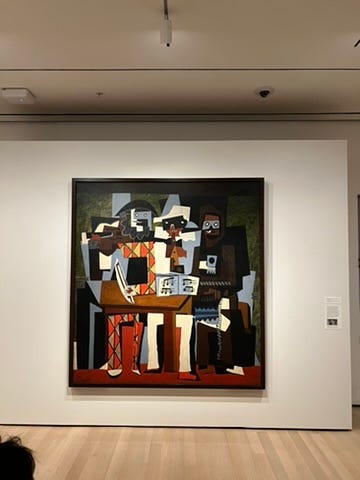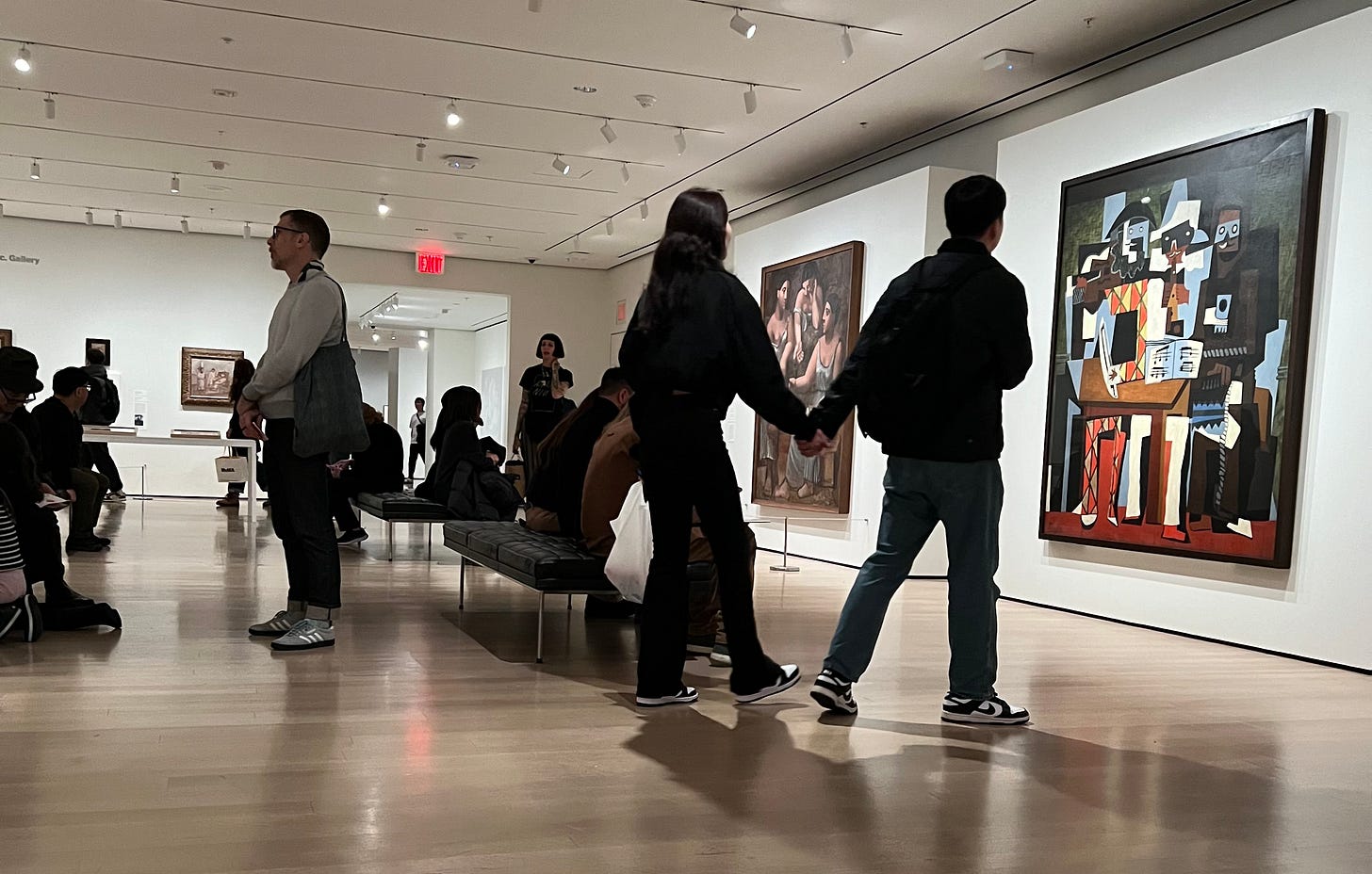I am wrestling. I am frustrated. I am in love. I want more. I am in awe. So much remains unresolved. How can one artist cause so many contradictory emotions at once within and outside the gallery? This year more than any other, I have been under Pablo Picasso’s influence. As I had mentioned earlier in a Dispatch, global institutions have been marking 2023 as the fiftieth anniversary of Picasso’s death. I have avoided writing about him. I have struggled to focus on just one piece and I have wanted to ignore him completely. I have resisted adding Picasso to my top 10, but it now seems an untenable stance. Picasso's legacy is complex and has faced criticism on various fronts. One primary concern is his personal life, particularly his relationships with women. Picasso's treatment of his romantic partners, including instances of misogyny and controlling behavior, has been more than scrutinized. His depictions of women in some artworks have also been criticized for reinforcing stereotypes and objectification.
Additionally, Picasso's appropriation of African and Iberian art during his African and Iberian periods, has been deemed culturally insensitive and accused of perpetuating colonialist attitudes. Critics argue that he distorted these cultural elements without proper acknowledgment or understanding of their original contexts. Yet institutions insist on celebrating him, moving forward with broad retrospectives. Will Picasso be cancelled? Not by any stretch of the imagination. This has been my on-going quandary, yet this year, from Paris to New York, his line, craft, and game-changing process, have haunted me.
The past few weeks, I have been obsessed with an exhibit at MoMA: Picasso in Fontainebleau. The exhibit brings together the groundbreaking works created by Pablo Picasso during the summer of 1921, which proved prolific. Amidst the unconventional setting of a garage in Fontainebleau, France (pictured at the exhibit entrance), Picasso produced a remarkable body of work, including two towering canvases—Three Women at the Spring and Three Musicians. The exhibition highlights the controversy surrounding Picasso's simultaneous exploration of diverse styles, sparking debates about progress, avant-garde versus academic, and revolutionary versus reactionary. The second gallery features four monumental canvases, along with additional paintings, drawings, pastels, and etchings from this pivotal period, providing a rare glimpse into Picasso's creative process.
I was drawn to the "Three Musicians,” one of the four canvases featured in the second gallery of the exhibit. Why? What pulled me in? How does this painting fit into the canon? Why the masked musicians? The painting features three musicians—a Harlequin, a Pierrot, and a friar. I found the three characters mystifying and fun at the same time. I came to find out that the three characters had a deeper meaning. The Harlequin, often associated with Commedia dell'arte, represents the playful, and theatrical aspects of life. It is one of Picasso’s recurring motifs. By contrast, the Pierrot, a sad clown, embodies melancholy and introspection. Finally, the friar embodies contemplative and spiritual inclinations. The friar is my favorite, primarily because of the way Picasso paints the rope cinching the figure into his habit. The painting being in the Cubist form married with the symbolic narrative captivates me upon every visit.
Overall, "Three Musicians" is important not only for its aesthetic qualities but also for its role in the evolution of several modern artistic movements. It has been a gift to wrestle with Picasso’s legacy, but he’s still my number 11. MoMA’s Fontainebleau exhibit invites museum-goers to appreciate how Picasso boldly innovated, contradicting his own pursuits by working simultaneously on various themes, using different styles. He was determined to make a legacy and this year I have found out that he accomplished just that. But, this story is far from complete. We will continue to reconsider and appreciate the enigmatic evolution of Picasso as one of the greatest artists of the 20th century.
Picasso at MoMA
Edited by Nicolas ChampRoux.














